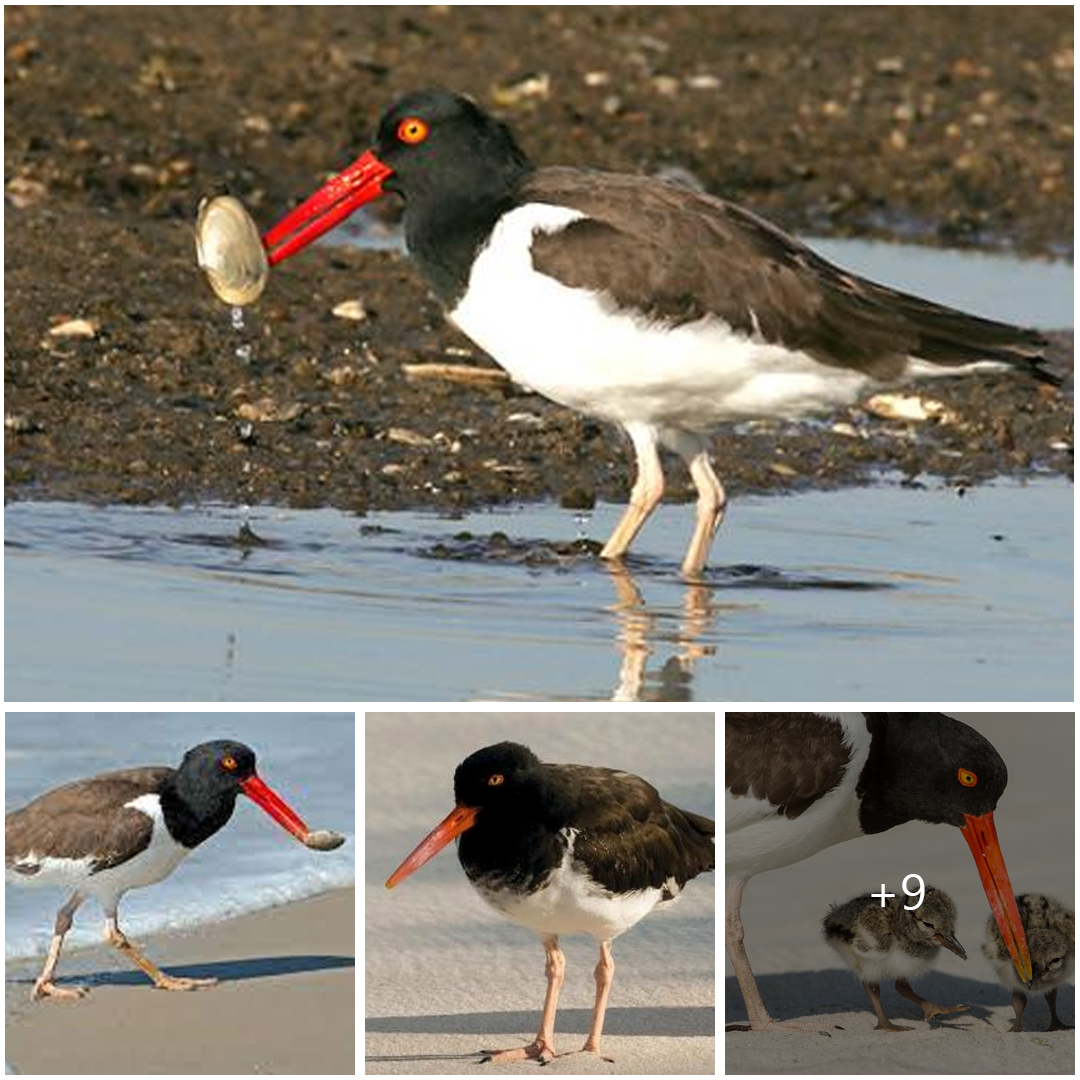
Exploring the American Oystercatcher: A Coastal Icon
The American Oystercatcher (Haematopus palliatus) stands as a charismatic symbol of coastal ecosystems throughout its range, from the eastern and southern United States to parts of South America. With its striking appearance and unique behaviors, this shorebird has captured the attention of birdwatchers and conservationists alike. Let’s delve into the fascinating world of the American Oystercatcher:
Appearance and Identification: The American Oystercatcher boasts a distinctive appearance with its black and white plumage, long orange-red bill, and bright yellow eyes. During flight, its wings reveal bold white patches, adding to its striking visual appeal. Adults typically measure between 16 to 18 inches in length and exhibit slight sexual dimorphism, with males generally larger than females.
Habitat and Range: Primarily found along coastal areas, estuaries, salt marshes, and sandy beaches, the American Oystercatcher relies on these diverse habitats for foraging, nesting, and roosting. Its range spans from the eastern coast of North America, including the Atlantic and Gulf coasts of the United States, down to parts of the Caribbean, Central America, and northern South America.
Behavior and Feeding Habits: As its name suggests, the American Oystercatcher specializes in feeding on bivalve mollusks, particularly oysters, clams, and mussels. Using its powerful bill, the bird probes into the substrate, pries open shells, and extracts the soft flesh inside. It also feeds on crustaceans, worms, and other invertebrates found along the shoreline. During breeding season, pairs establish territories and defend nesting sites, often forming small colonies on sandy or gravelly beaches.
Conservation Status: Despite its widespread distribution, the American Oystercatcher faces various threats, including habitat loss, disturbance from human activities, predation, and climate change-induced impacts such as sea-level rise and coastal erosion. Conservation efforts aimed at protecting key habitats, implementing sustainable management practices, and minimizing disturbances are crucial for ensuring the long-term survival of this species.
Conclusion: The American Oystercatcher serves as a vital indicator of the health and vitality of coastal ecosystems, playing a crucial role in maintaining the balance of marine food webs. By raising awareness about the importance of conserving its habitat and addressing key threats, we can ensure that future generations continue to marvel at the beauty and resilience of this iconic shorebird.





